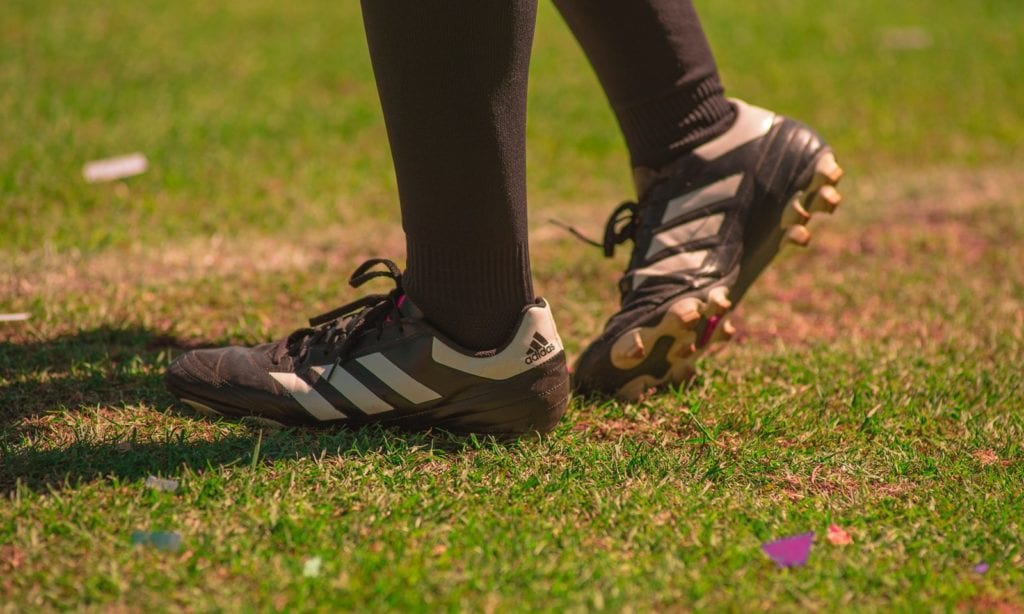What are Soccer Cleats?

Introduction
The history of soccer cleats is a long and colorful one. It started out in England and has spread throughout the world giving birth to three great brands of cleats, PUMA, Adidas and Nike soccer cleats (click for the top 10). From its humble beginning of a leather work boot to today’s ultra-sophisticated, technologically advanced offer they have come a long way.
History of Soccer Cleats
The humble soccer cleats dates back to the time of Henry VIII of England. England was the pioneer of the soccer cleat, and in fact the reason we have the modern game of soccer today. Henry ordered the first pair of soccer cleats in 1526. They were made from hand-stitched leather and cost around four shillings. Soccer at that time was considered a ruffians sport, with very few rules and a lot of fouls.
The next three hundred years would see the beautiful game growing in popularity with the common people, the workers. In fact the modern football boot developed from these workers boots. They were leather and the players would often attach nails at the bottom for better traction. The first cleats.
However these nails were dangerous and there were a lot of injuries during the match and this lead to the football association passing a rule in 1863 that no nails, iron plates or gutta-percha (a substance made from tree sap) were allowed to be used on any soccer boots. The leather studs on soccer boots began to appear in the late 1880’s and these studs were incorporated into the games rulebook in 1891.
The studs had to be made from leather and could not be longer than a half inch. The 1920’s is when it all started to happen for the soccer cleat. This is when the Dassler Brothers, Adolf and Rudolf started to make their versions of these iconic boots. Although their first boot was designed for bobsledders, they very soon developed one for football players with a cleat that had six nailed studs that were replaceable depending on the weather conditions.
Later, due to a family feud, Adi or Adolf Dassler would found Adidas and his brother Rudolf would found a rival company PUMA. Two of the most iconic sports shoes in the world, and some of the best soccer cleats. Since the 1950’s these two great brands have dominated the scene when it comes to soccer cleats.
At the 1966 world cup about 75% of all of the players from various teams were wearing Adidas cleats, PUMA though, had Pele from Brazil as their brand ambassador. This is when other brands started to make their appearance such as Mitre. In 1979 the iconic Copa Mundial from Adidas was released and this would go on to be the best selling soccer cleat ever.
Made with Kangaroo leather they were light and ultra-supportive, and the black boot with three white stripes dominated the soccer pitches around the world. The biggest change and challenge to the Dasslers brother’s monopoly of the soccer cleat market came about when Nike made its appearance in the 1990’s on the soccer cleat landscape.
Although Nike had been around for a time, they had concentrated on running shoes but now expanded into soccer cleats. In 1994 the Nike Tiemp was released in 1994 just in time for the world cup and they managed to sign a number of big names like Paolo Maldini to wear the Swoosh. IN 1998 Nike Mercurial made its appearance and this was revolutionary in the weight and design of the shoe. From the 1990’s the soccer cleat began to transform.
This is when the different companies vied to produce lighter boots with more stability. This led to the introduction of the bladed stud. These studs gripped the turn better and offered a lot more stability to the player. Studs have since morphed into different shapes and sizes and combinations are used on the outsoles of the big manufacturers to enhance the boots for different types of players such as forwards, midfielders and backs.
What is FG in Soccer Cleats?
FG in soccer cleats stands for Firm Ground. This means that the soccer cleat is designed to be used on Firm Ground pitches. They can also be used on turf. These soccer cleats are designed for areas where there is not a lot of rainfall, so not ideal for wet or muddy surfaces.
What does AG Stand for in Football Boots?
AG stands for Artificial Grass. AG studs are designed to get the most traction out of the hard artificial pitch but can also be used on grass pitches, although they are not ideal for those. Of course FG, which is a hybrid type of cleat can be used on multiple surfaces and this includes AG.
Conclusion
The humble soccer cleat has come a long way from its first appearance in the 1520’s and it will continue to grow and develop as the game changes. Different styles of play, different pitches and better technology has taken it to new heights in design and construction and as the way people play the game changes, so will the soccer cleat change to keep up with requirements of the great football players of the day.